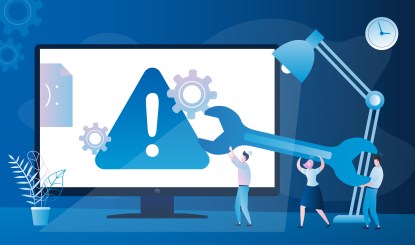Have you noticed that, despite investing in the latest productivity tools for your organization, there hasn’t been an increase in the productivity of its operations? Maybe it has you thinking about new tools you can deploy, but the reality is that you should check for an internal problem known as “IT tool fatigue.”
IT tool fatigue is when you have too many tools, too much overlap between systems, and too much jumping between applications. At a minimum, IT tool fatigue can lead to lost productivity because of how many platforms users have to switch between, but it can also lead to users feeling overwhelmed, stressed, and annoyed by the number of tools they have to use and learn.
This is a common problem that reduces efficiency, productivity, and satisfaction for your users. It can also cause other issues, such as:
Delays, Errors, and Confusion
When your tools don’t work well together, users have to switch between different platforms, formats, and interfaces. The more that happens, the more issues are likely to arise. This is particularly dangerous when it comes to tools that protect the safety and security of your users, data, and infrastructure.
Low Adoption
When your users have to deal with too many tools, they may resist using them or use them incorrectly. This undermines the value and ROI of your IT investments.
High Turnover
When your users are unhappy with their tools, they may become unhappy with their jobs. This can lead to lower engagement, performance, and retention.
I found this point from a recent Harvard Business Review article to be particularly striking: “We found that, on average, the cost of a switch is little over two seconds and the average user in the dataset toggled between different apps and websites nearly 1,200 times each day. That means that people in these jobs spent just under four hours a week reorienting themselves after toggling to a new application. Over the course of a year, that adds up to five working weeks, or 9% of their annual time at work.”
So, how can you avoid IT tool fatigue and keep your users happy?
Simplify Your Stack
Don’t use more tools than you need. While there may be value in having tools from different technology stacks, there is almost never a reason to have more than one project management, collaboration, or accounting software, as having multiple tools that fulfill the same function is likely to breed confusion and uncertainty among users. Evaluate your current tools and eliminate any redundancies or inefficiencies. Choose tools that are intuitive, user-friendly, and easy to learn so your team can get onboarded quickly and see the benefits.
Integrate Your Tools
Choose tools that can seamlessly communicate and share data with each other. Use APIs, connectors, or middleware to enable integration to reduce the amount of switching between applications that your users need to do to perform simple processes in your organization. The fewer times an employee needs to switch windows, the less likely they are to suffer from IT fatigue.
Involve Your Users
When you’re considering a new technology, bring actual users into the process to offer input on whether it will deliver value the way you think it will. Ask for their feedback, suggestions, and preferences on how they’d solve the problem and take the feedback seriously. Listening to their needs and challenges will allow you to make a more informed decision, but it will also gain buy-in so they’ll be more likely to adopt whatever platform ends up being selected for implementation.
Avoiding IT tool fatigue and keeping your users happy will not only boost efficiency, productivity, and satisfaction, but also employee retention and advocacy. While these may feel like superficial concerns, they can weigh on an organization’s effectiveness and have a high cost associated with them that go beyond the price tag of the solution you’re investing in. High turnover, employee disengagement, and the recurring expense of solutions you don’t need could be depressing the success of your organization. Luckily, it’s a simple fix that starts with finding and eliminating redundant systems within your IT stack.
If you have questions or are looking for ways to streamline your tech stack, Contact Us and we can set up a time to review your organization’s needs.

